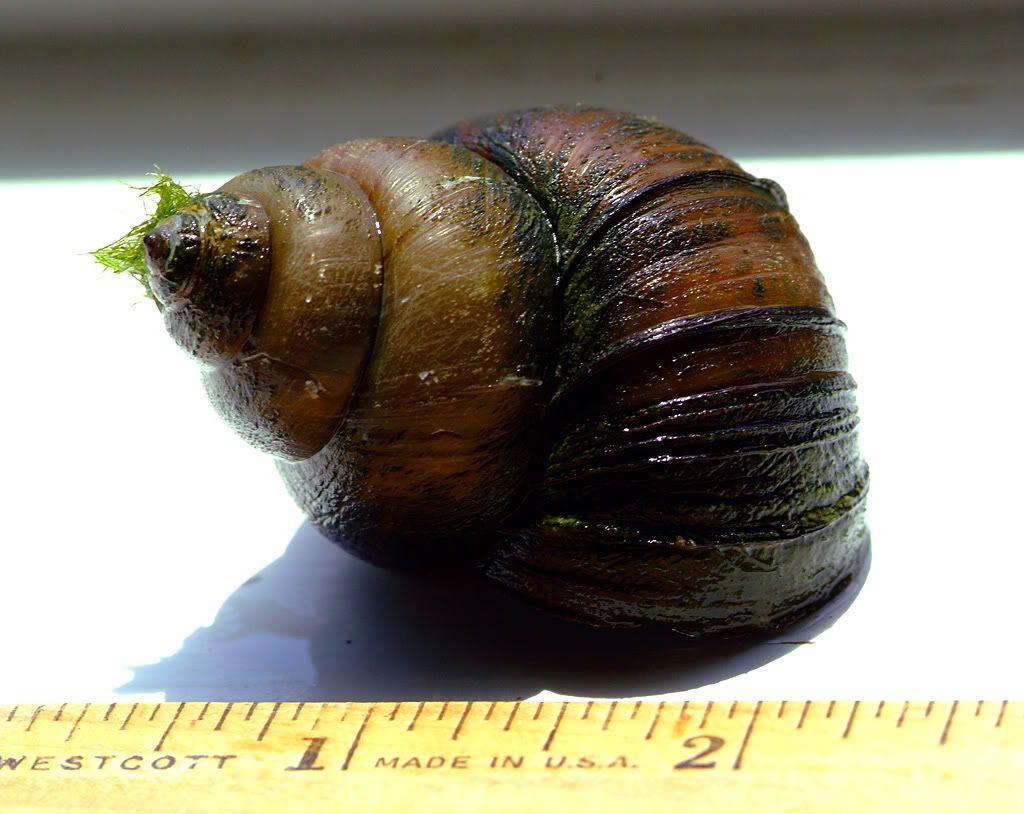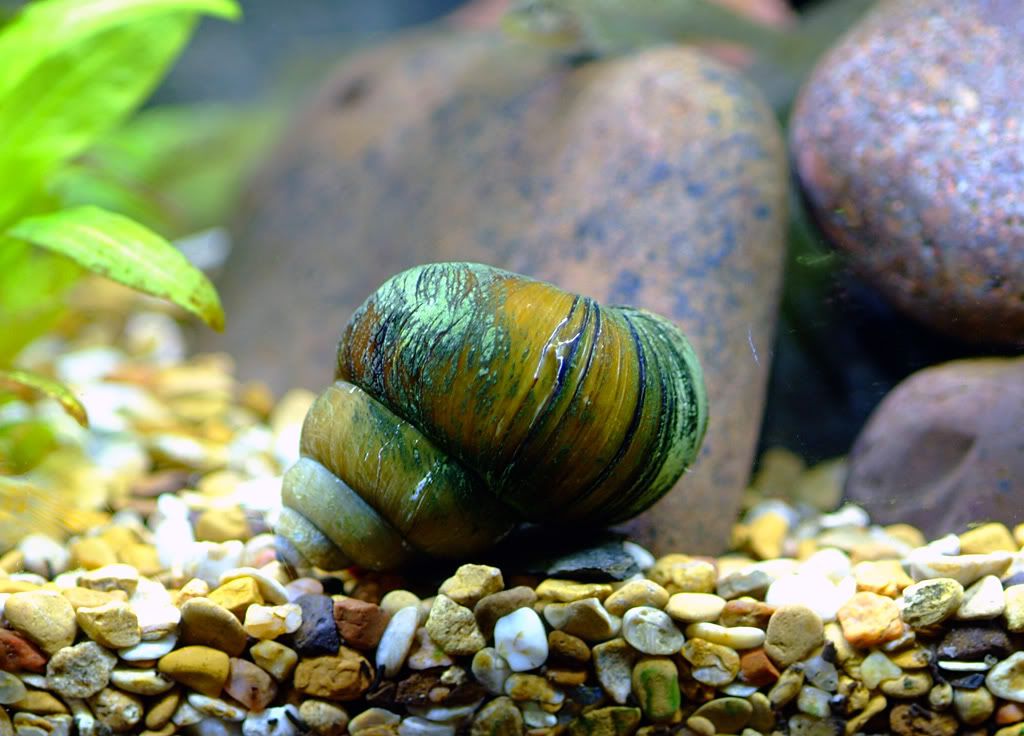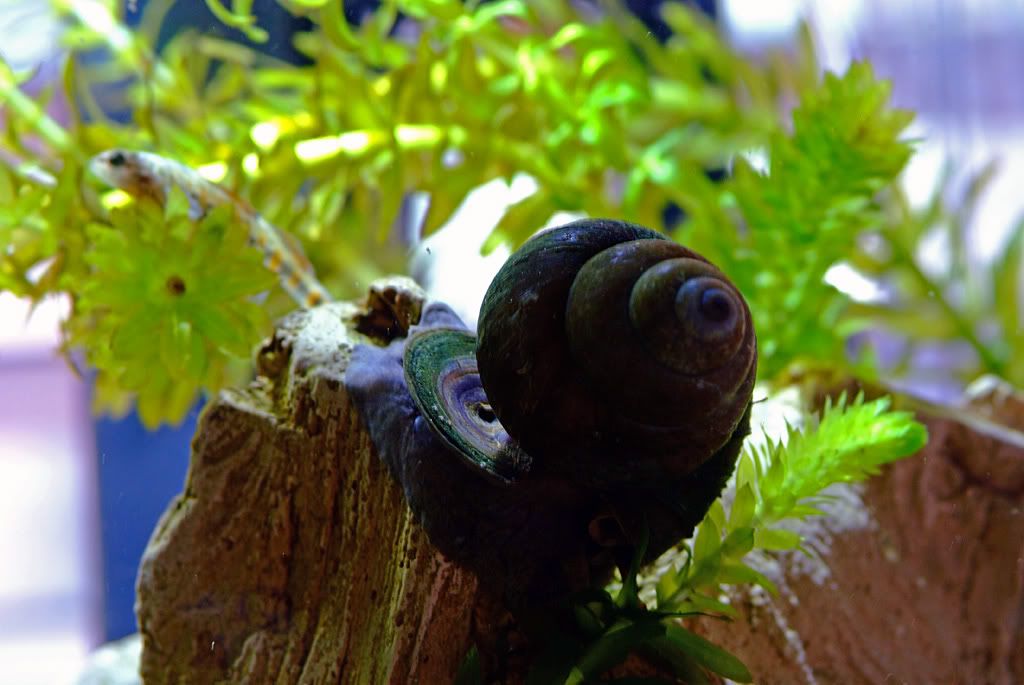"gigantic black" does sound like probably a livebearing trapdoor snail, either Bellamya (aka Cipangopaludina) japonica or B. chinensis. Both are invasive exotics. They are gill-breathers so they are not quite as tolerant of poor water quality as the pond and ramshorn snails Erica mentioned. I dont know whether they can harbor parasites (flukes, tapeworms, nematodes) that can infect your fish, but quarantine is not helpful against parasites that use multiple host species, since they can remain dormant in one host (snail) for years while waiting to be eaten by the next host (bird, fish, etc). They have spread rapidly in the past 10-20 years via Asian food markets and pond hobbyists. They can filter-feed in addition to grazing like other snails.
More info:
http://nas.er.usgs.g...?SpeciesID=1046The Japanese mystery snail is a host to
Angiostrongylus cantonensis larvae in Taiwan, a species associated with eosinophilic meningitis (Lin and Chen 1980). It is also host to many other parasites in Asia, some of which may infect humans.
Means of Introduction: Imported to West Coast into Asian food market about 1892. Deliberate release to the Great Lakes where it was intentionally stocked as food for the channel catfish,
Ictalurus punctatus in Lake Erie in the 1940s (Mills et al. 1993; Wolfert and Hiltunen 1968).
Impact of Introduction: A) Realized: This species has been caught in very large numbers by fishermen in Sandusky Bay, Lake Erie; in fact, two tons have sometimes been caught in one seine haul (Wolfert and Hiltunen 1968). Fishermen in this region often consider it a nuisance (Wolfert and Hiltunen 1968).
B) Potential: In the Boston area, the Japanese mystery snail has been found to be a regular host to the common native parasite
Aspidogaster conchicola, which is a first time record in North America for a gastropod acting as host to this species (Michelson 1970). Negative interactions with native gastropods are also possible.
Edited by gerald, 12 May 2012 - 12:40 PM.










